When water dissolves the surface rock, a large depression or hole opens up in the ground. Sometimes they create small holes, while other times deep, vast cavities form. Some of them are so enormous that they become lakes or even form their own ecosystems, complete with unique animal and plant life. Check out 10 of the deepest sinkholes in the world and learn about their locations and unique features.
Devil’s Bath – Canada
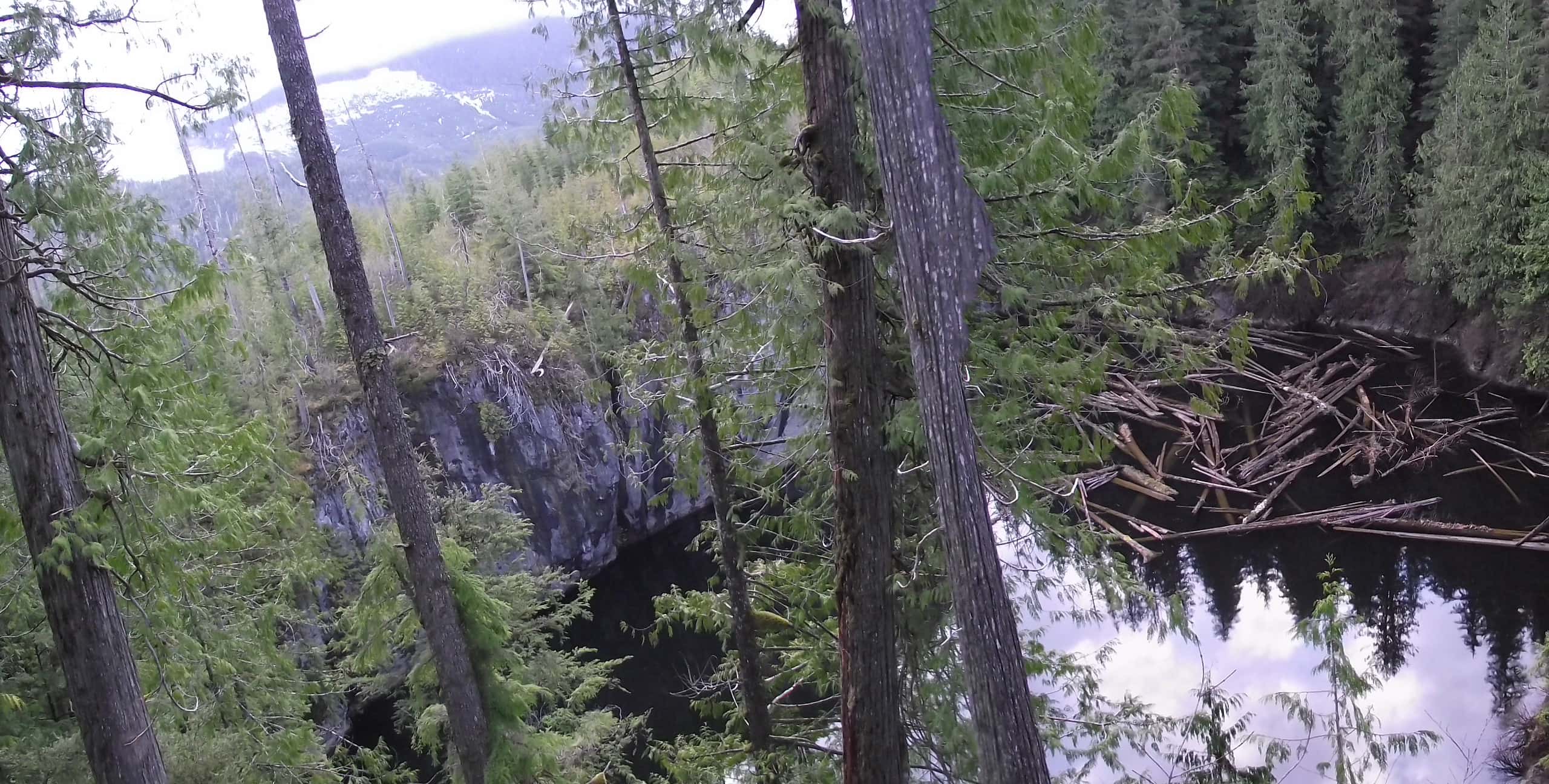
Devil’s Bath is a sinkhole with a depth of 144 feet and a circumference of nearly 1,200 feet.
©CC BY 3.0 - License
The enormous cenote of Devil’s Bath is on Vancouver Island, British Columbia in Canada. Devil’s Bath is a sinkhole with a depth of 144 feet and a circumference of nearly 1,200 feet. This impressive cenote is one of the largest in the country. It’s connected by water to the Benson River by way of underground passages hundreds of feet below the water’s surface, which maintains water within the hole. This sinkhole is in a forested area and is restricted to the public due to overgrowth and steep terrain.
Qattara Depresssion – Egypt
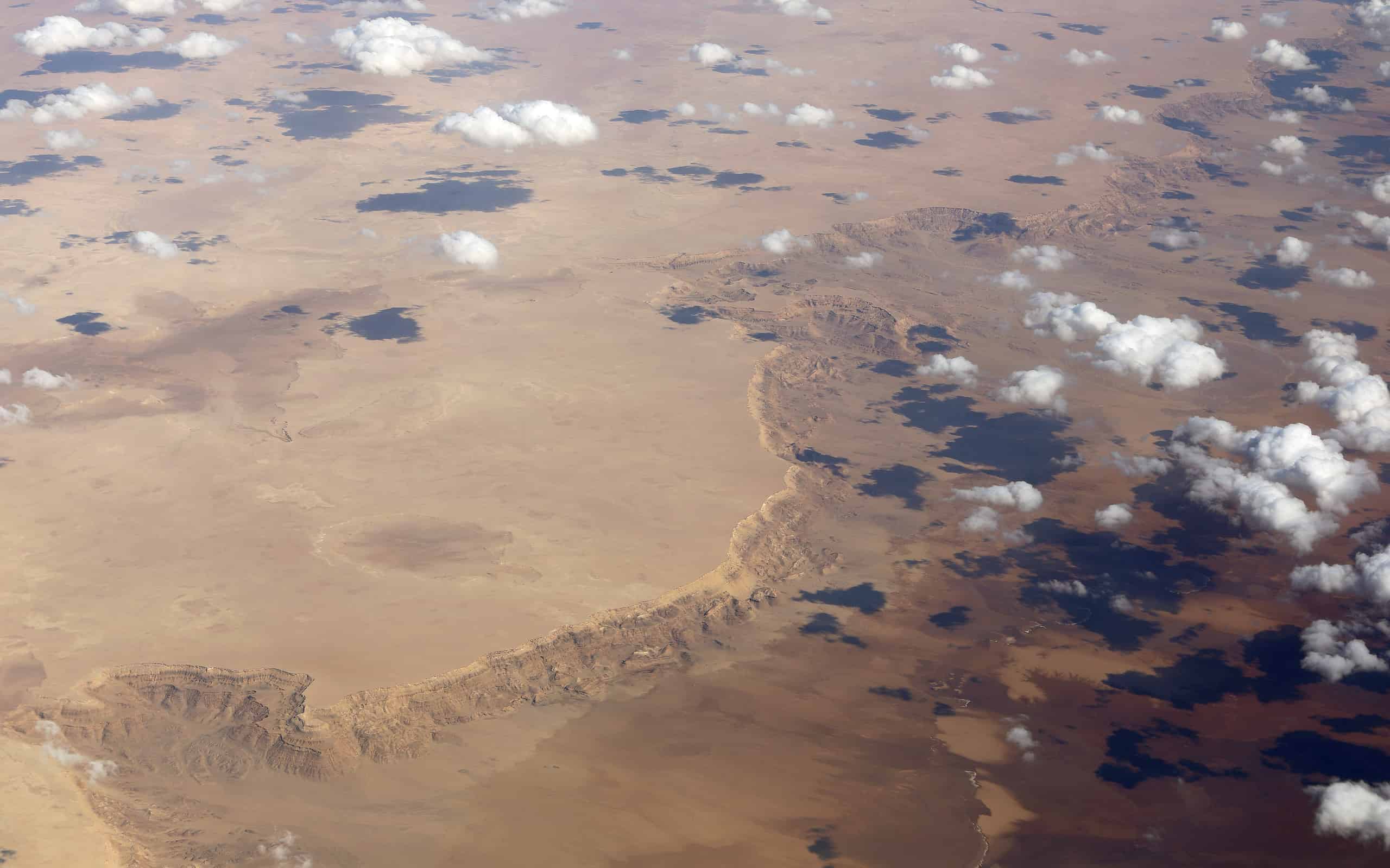
There are talks of flooding this Egypt depression and using the water for hydroelectric power.
©CC BY-SA 4.0 - License
The Qattara Depression is a naturally formed geological sinkhole in north-central Egypt. It’s part of Egypt’s Western Desert and lies below sea level, where it is the second-lowest point in Africa at 436 feet below sea level. The bottom of the depression contains salt pans, salt marshes, and sand dunes and covers an area of more than 7,500 square miles. There are talks about flooding the depression and using it as a source of hydroelectric power.
Sotano De Las Golondrinas – Mexico
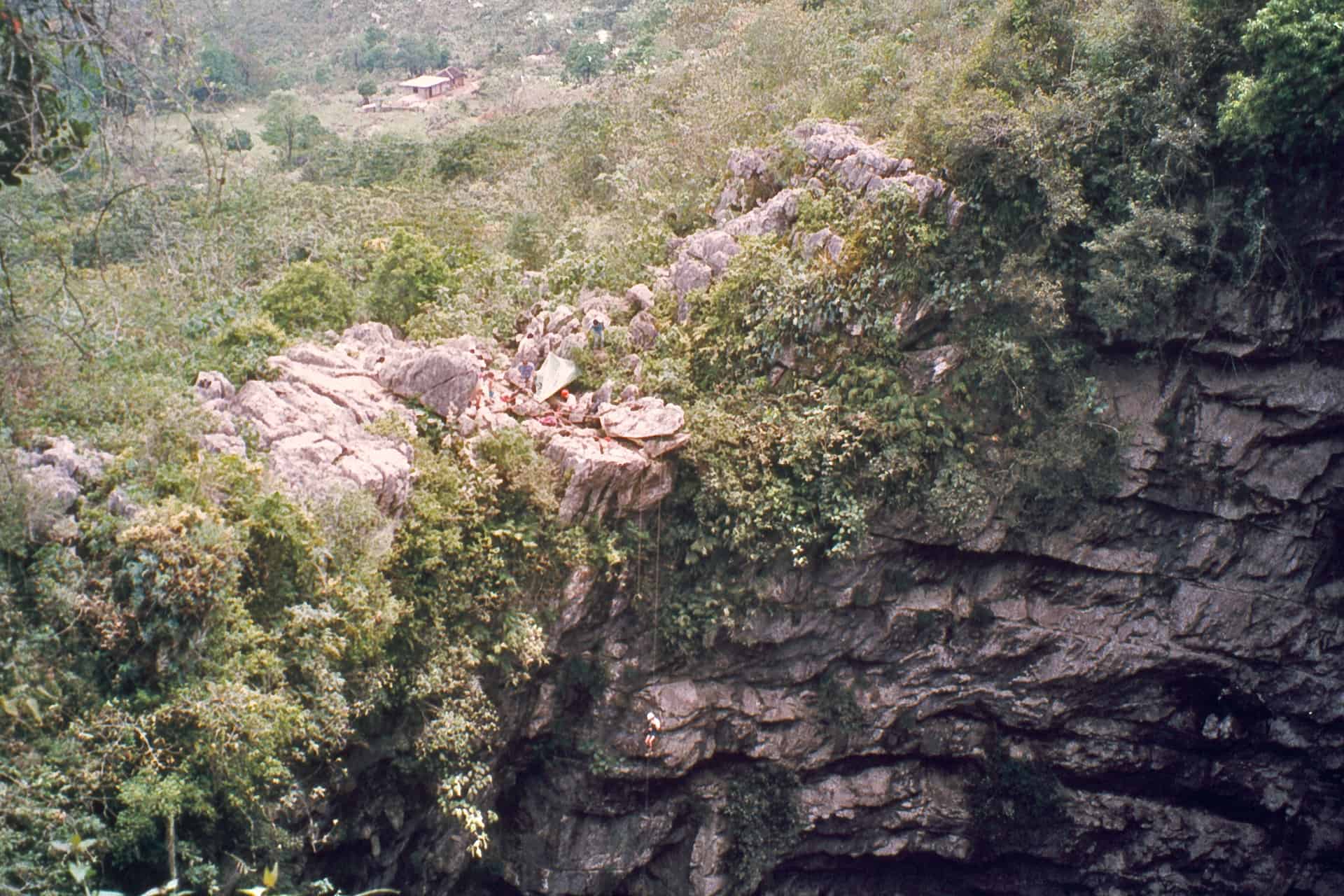
The narrow opening of Swallows Basement sits at ground level.
Also known as Swallows Basement, Sotano de Las Golondrinas is a deep abyss in Mexico formed by water erosion in the limestone. The narrow opening sits at ground level and the bottom is the size of three football fields. If you were to propel down the hole, you would hit the bottom of the cave more than 1,600 feet below the surface. This sinkhole is home to thousands of swift and parrots, who spiral out at dawn.
Great Blue Hole – Belize
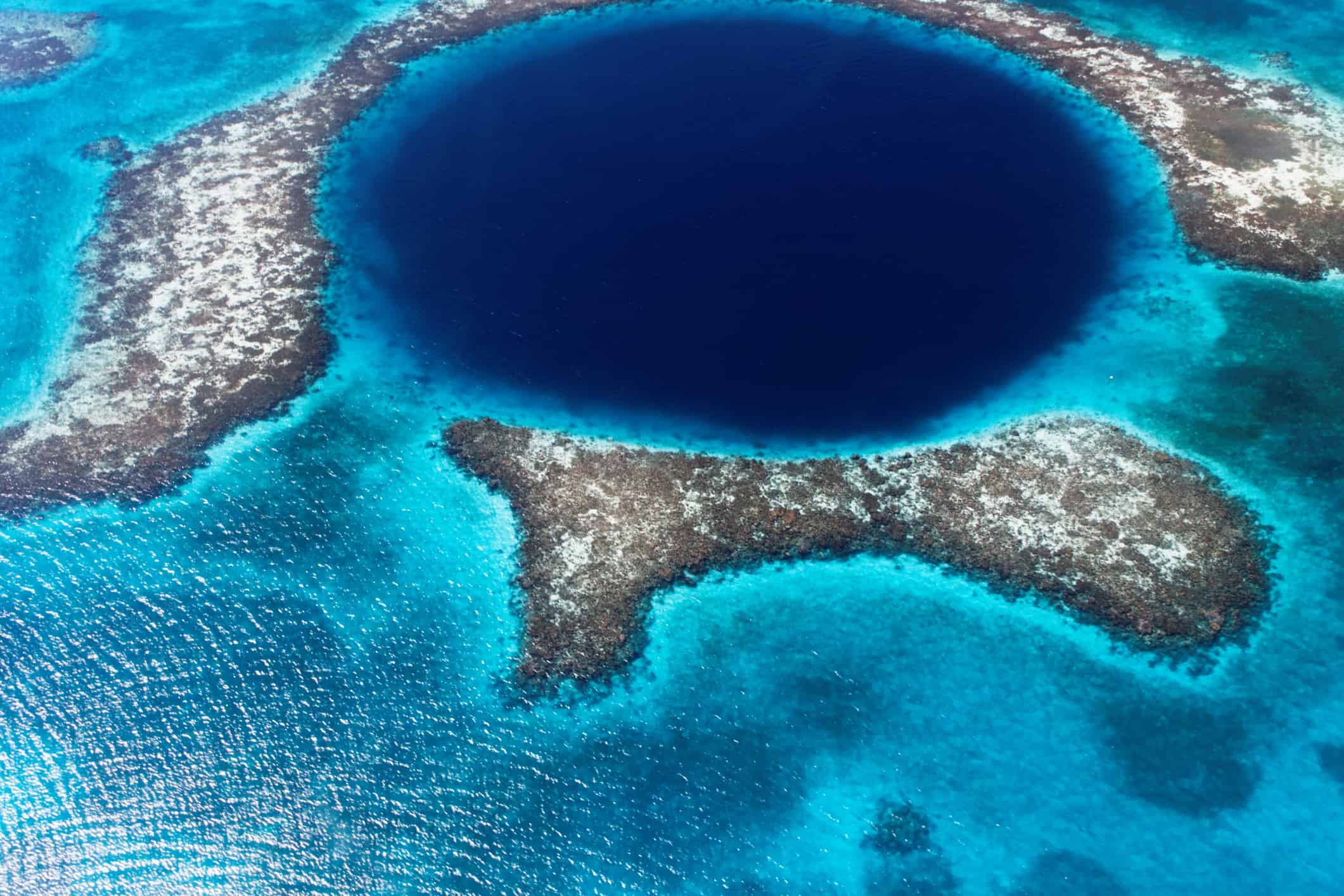
The Great Blue Hole is circular and spans more than a thousand feet across and 400 feet deep.
©iStock.com/Lomingen
This giant marine sinkhole is off the coast of Belize in the center of a small atoll. The Great Blue Hole is circular and spans more than a thousand feet across and over 400 feet deep. The hole covers an area of 760,500 square feet and was formed more than 150,000 years ago. The cave slowly began to flood as sea levels rose and is now one of the most famous diving sites in the world.
Taam Ja’ Blue Hole – Mexico
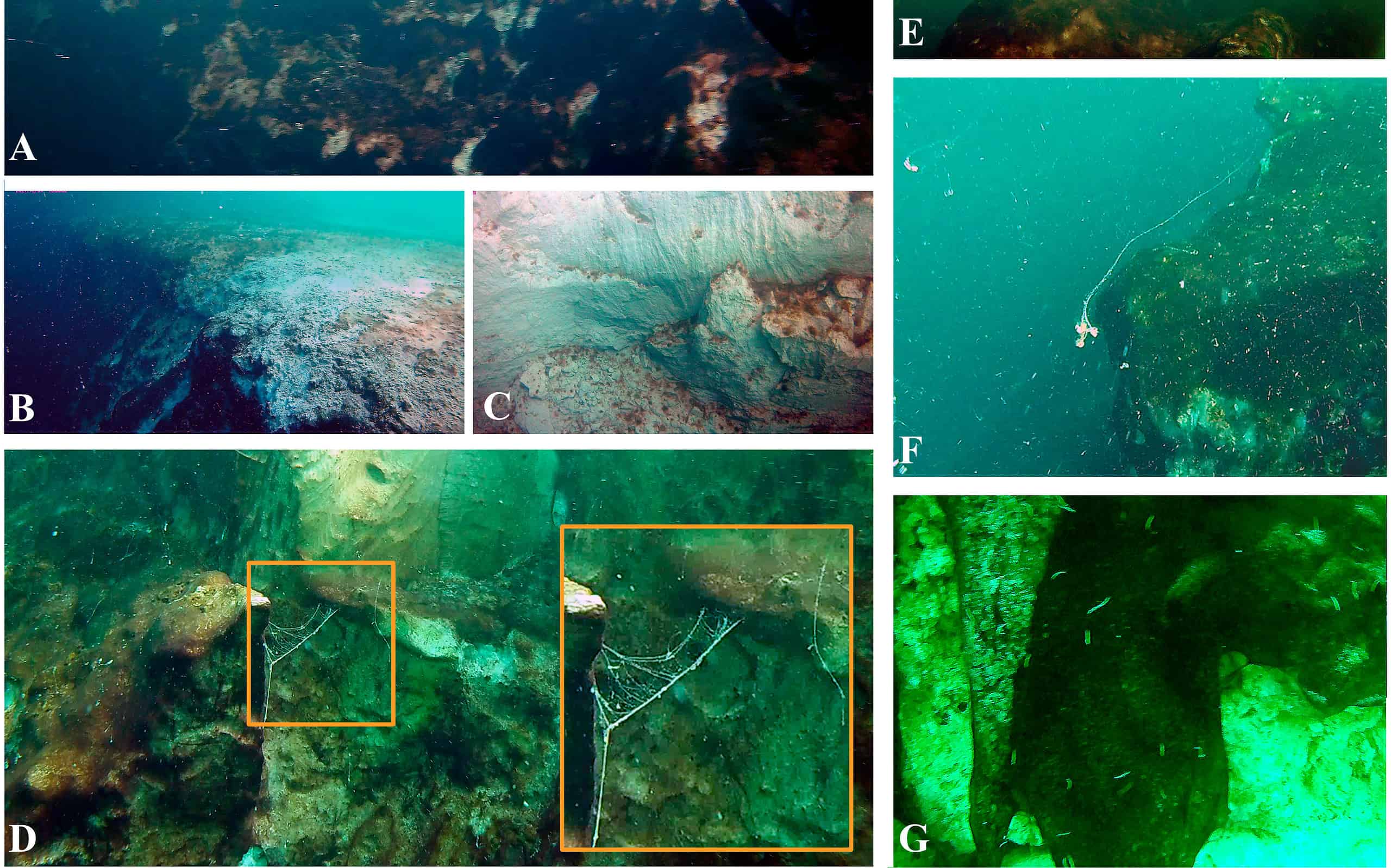
The hole is nearly 3,000 feet deep and contains vast marine life despite its lower oxygen levels.
©CC BY 4.0 - License
Taam Ja’, or the Mexican Blue Hole, is the world’s second-deepest blue hole and one of the largest sinkholes. The giant underwater cavern was recently discovered in Chetumal Bay, covering an area of more than 147,000 square feet. The hole is nearly 900 feet deep and contains vast marine life despite its lower oxygen levels.
El Zacaton Sinkhole – Mexico

It gets its name from the free-floating islands of Zacate grass that move across its surface.
©CC BY-SA 4.0 - License
El Zacaton is the deepest water-filled sinkhole in the world, featuring a depth of more than 1,100 feet. The sinkhole is part of the karst features in northeastern Tamaulipas, Mexico. It gets its name from the free-floating islands of Zacate grass that move across its surface. Along with these unusual floating islands, El Zacaton contains endemic species of microorganisms.
Bayou Corne – Louisiana
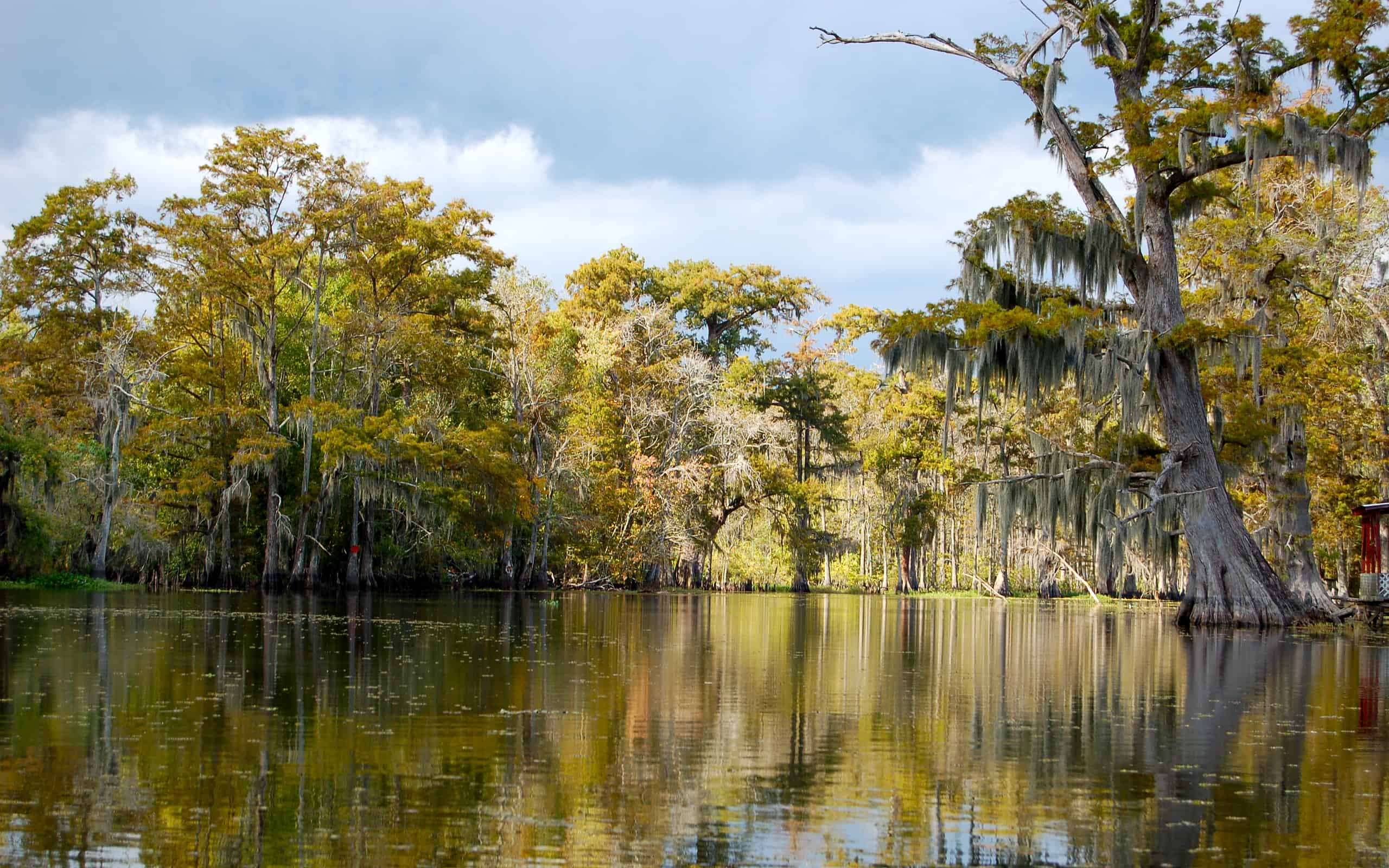
When the sinkhole was discovered in August 2012, residents were told to evacuate the area.
©CC BY 2.0 - License
Created from a collapsed underground salt dome cavern, the Bayou Corn Sinkhole sits near the community of Bayou Corne in Assumption Parish, Louisiana. When the sinkhole opened and was discovered in August 2012, residents were told to evacuate the area. The cavern began to collapse in June of that year and people had described shaking and rumbling.
Dragon Hole – South China Sea

Dragon Hole is one of the deepest blue holes on Earth, measuring 987 feet deep.
©CC BY 2.0 - License
Found in the eastern Atoll near the Paracel Islands, the Dragon Hole is one of the deepest blue holes on Earth, measuring 987 feet deep. It is deeper than the Taam ja’ and Great Blue Hole, but not as deep as the freshwater Zacaton. There is myth and lore surrounding the Dragon Hole and it is said that the Monkey King found his golden cudgel in the hole.
Crveno Jezero – Croatia
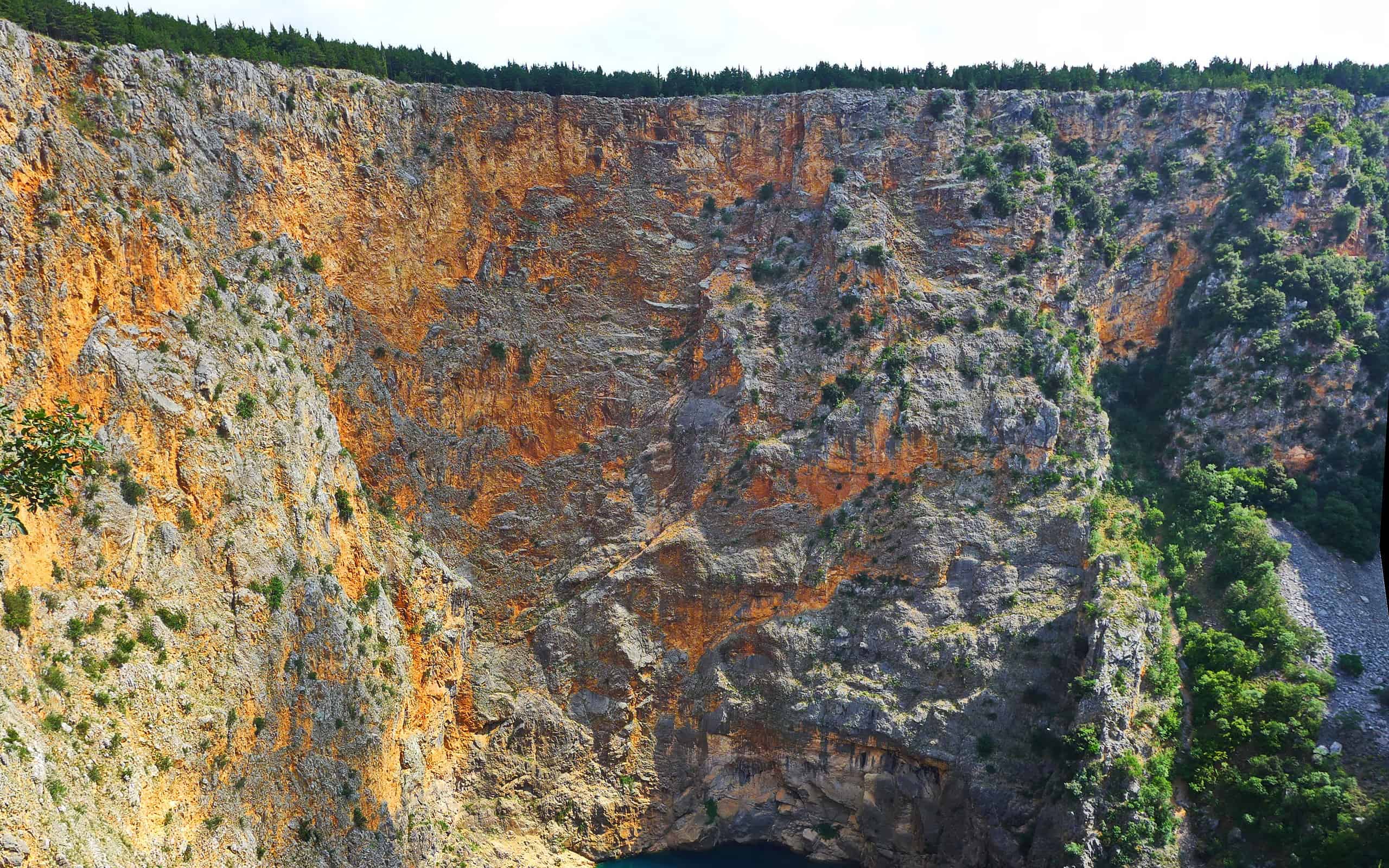
The hole contains a lake, which likely emerged after the ceiling of an enormous cave collapsed.
© CC BY-SA 4.0 - License
Crveno Jezero, also known as Red Lake, is one of the largest sinkholes in the world. It features nearly vertical walls and a total depth of 942 feet. The hole contains a karst lake, which likely emerged after the ceiling of an enormous cave collapsed. The sinkhole gets its name from the reddish color of the surrounding cliff walls.
Xiaozhai Tiankeng – China
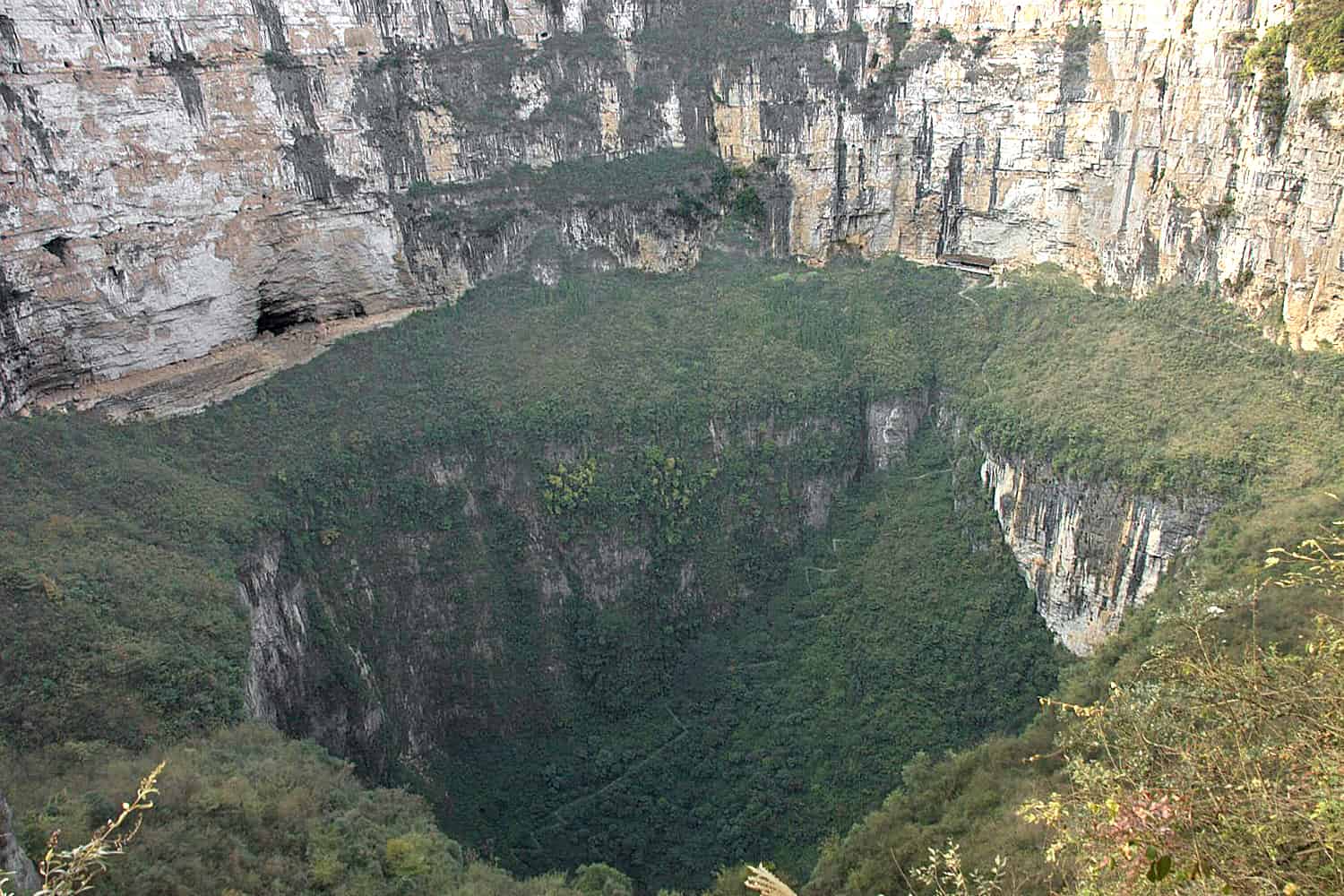
During the rainy season, you can witness a waterfall at the mouth of the hole.
©1,500 × 1,000 pixels, file size: 1.94 MB, MIME type: image/jpeg - License
Xiaozhai Tiankeng is the largest and deepest sinkhole in the world, measuring 2,054 feet long, 1,762 feet wide, and 2,172 feet deep. This massive sinkhole has been famous since ancient times and now provides a 2,800-step staircase for tourists to view the stunning and immense natural formations. During the rainy season, you can witness a waterfall at the mouth of the hole. Many rare and unique species, like giant salamanders and clouded leopards, have been found inside the hole.
The photo featured at the top of this post is © 1,500 × 1,000 pixels, file size: 1.94 MB, MIME type: image/jpeg – License / Original
Thank you for reading! Have some feedback for us? Contact the AZ Animals editorial team.






